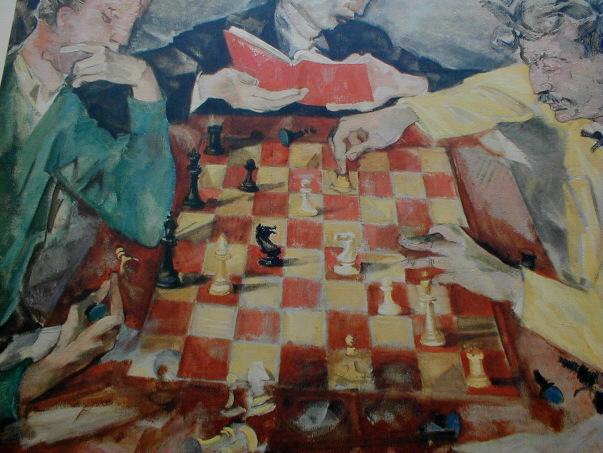learning an new (old) opening
Analyzing the older games of Morphy and Anderssen, I have become interested in the King's Gambit. I have started playing it a little. This is probably the closest mainstream opening to the Traxler Counterattack in that the games favor can shift from Black to White from move to move. One must weigh King Safety vs Material Gain often. The opening theme is for white to attack the f7 square, clear out the f file even at the cost of losing a piece and eventually to play d4 controlling the center.
What interests me in this opening is the number of passive sacrifices /silent sacrifices (unsure if I am making up this terminology or have heard it before) where
white makes a move to create a strong attack or set a trap allowing black to capture a piece. This is different from a typical sacrifice where a queen takes a lesser valued piece and is recaptured as part of a mating net or larger combination.
The Muzio Gambit is an example of this passive sacrifice. White gives up a Knight to clear out the square and double his major pieces.
A Shirov's Muzio Gambit Minature
Here is a passive sacrifice trap that Morphy sets for Anderssen to capture his queen This trap amazes me.
Here Capablanca gives up a queen early
of course the Kings Gambit can be declined which as white I am comfortable playing against. Unsure as black which I like to play better to decline it using the Falkbeer or accepting it normally it turns into a Kieseritsky Gambit.
There is tons of theory here and I am having some fun playing through some games.
I am looking through my books to find annotated KG games and came across Koenigs book which tracks historically significant games in the development of both the king gambit accepted as well as declined.
I ran across the game linked below in Keres Power Chess. Here is a case of a passive sacrifice (sacrificing the exchange) by playing 15 g3 a move which Tal analyzed for over an hour before taking the rook. The last part of the game Tal played in time trouble so the ending is not played very accurately.
Bronstein vs Tal Falkbeer Countergambit
I have miles to go on learning this but it should prove interesting !
What interests me in this opening is the number of passive sacrifices /silent sacrifices (unsure if I am making up this terminology or have heard it before) where
white makes a move to create a strong attack or set a trap allowing black to capture a piece. This is different from a typical sacrifice where a queen takes a lesser valued piece and is recaptured as part of a mating net or larger combination.
The Muzio Gambit is an example of this passive sacrifice. White gives up a Knight to clear out the square and double his major pieces.
A Shirov's Muzio Gambit Minature
Here is a passive sacrifice trap that Morphy sets for Anderssen to capture his queen This trap amazes me.
Here Capablanca gives up a queen early
of course the Kings Gambit can be declined which as white I am comfortable playing against. Unsure as black which I like to play better to decline it using the Falkbeer or accepting it normally it turns into a Kieseritsky Gambit.
There is tons of theory here and I am having some fun playing through some games.
I am looking through my books to find annotated KG games and came across Koenigs book which tracks historically significant games in the development of both the king gambit accepted as well as declined.
I ran across the game linked below in Keres Power Chess. Here is a case of a passive sacrifice (sacrificing the exchange) by playing 15 g3 a move which Tal analyzed for over an hour before taking the rook. The last part of the game Tal played in time trouble so the ending is not played very accurately.
Bronstein vs Tal Falkbeer Countergambit
I have miles to go on learning this but it should prove interesting !


2 Comments:
At 2:59 AM, Temposchlucker said…
Temposchlucker said…
I play the King's gambit in the way GM Joe Gallagher advocates it. He said that the Muziogambit at grandmaster level leads to drawish positions (!). In spite of huge efforts he didn't manage to revive the line.
So I don't play the Muzio gambit but the line Gallagher advises with h4.
But I think that the Muzio below 2000 is very well playable.
I played it a few times in a rapid tournament, always with great succes.
Maybe now I start to like endgames I can have another look at the Muzio, since I'm starting to lose my fear for drawish positions.:)
At 6:30 AM, takchess said…
takchess said…
I am having fun with it. I have heard the same thing about the Muzio gambit being drawish is that when the Muzio is declined ? accepted ? or both ? I am interest Tempo whether you like it when black declines and what you feel your chances are when that happens. I'll have to find the Gallagher book I have an old Kornchoi book which I borrowed from our chess club.
Post a Comment
<< Home